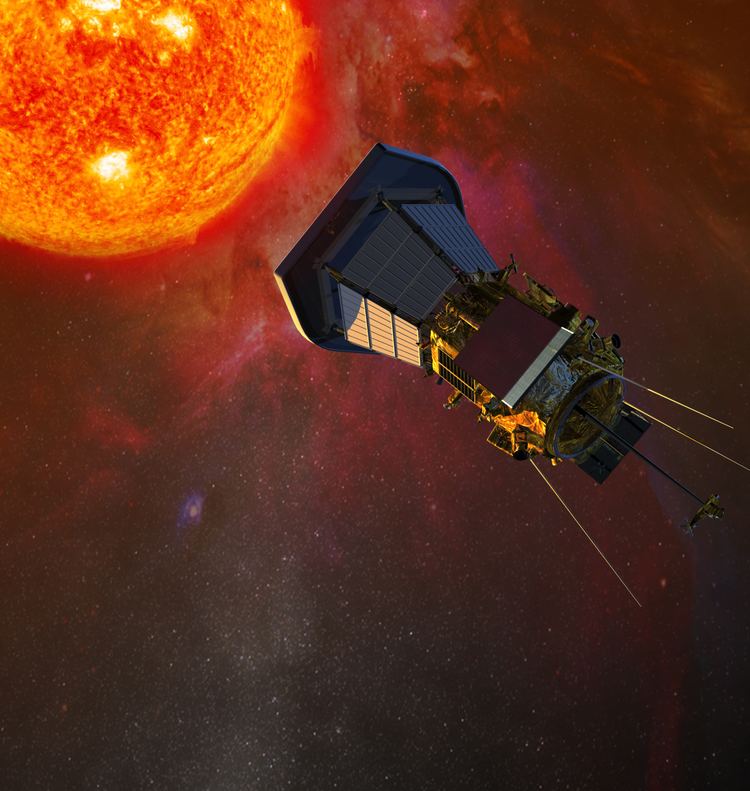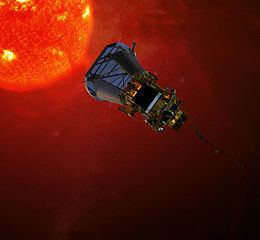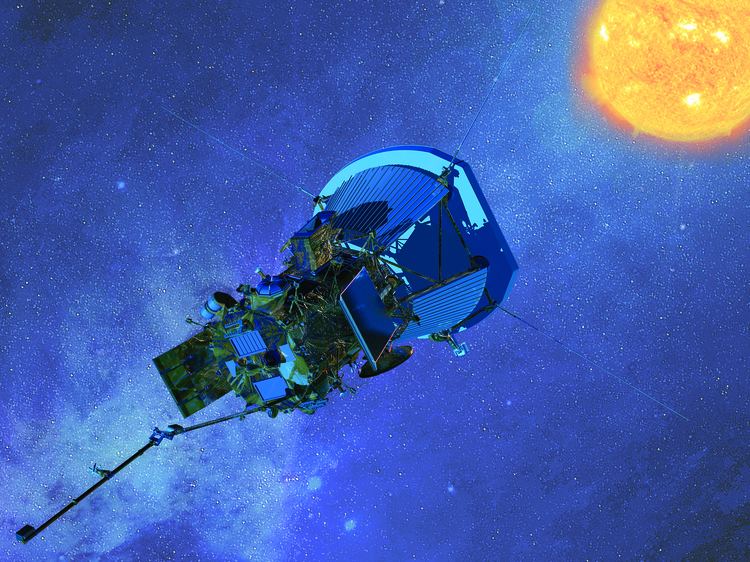Website solarprobe.jhuapl.edu Inclination 3.4° Launch mass 610 kg Rocket Delta IV Heavy | Dry mass 555 kg Period 2.9 months Launch date 31 July 2018 | |
 | ||
Names Solar Probe+
NASA Solar Probe Mission type Solar heliophysics orbiter Operator NASA / Applied Physics Laboratory Mission duration 6 years, 321 days (planned) Manufacturer Applied Physics Laboratory Similar Solar Orbiter, STEREO, Ulysses, WIND, Genesis | ||
Solar Probe Plus or Solar Probe+, previously NASA Solar Probe, is a planned robotic spacecraft to probe the outer corona of the Sun. It will approach to within 8.5 solar radii (5.9 million kilometers or 3.67 million miles) to the 'surface' (photosphere) of the Sun. The project was announced as a new mission start in the fiscal 2009 budget year. On May 1, 2008 Johns Hopkins University Applied Physics Laboratory announced it will design and build the spacecraft, on a schedule to launch it in 2015. The launch date has since been pushed back to 2018, with the Delta IV Heavy as the launch vehicle.
Contents
- Solar probe plus nasa to send first robotic spacecraft to sun next year
- Trajectory and mission
- Scientific goals
- References

Solar probe plus nasa to send first robotic spacecraft to sun next year
Trajectory and mission

Early conceptual designs for the Solar Probe mission used a gravity assist maneuver at Jupiter to cancel the orbital speed of the probe launched from Earth, in order to drop onto a trajectory close to the Sun. The Solar Probe Plus mission design simplifies this trajectory by using repeated gravity assists at Venus, to incrementally decrease the orbital perihelion to achieve multiple passes to approximately 8.5 solar radii, or about 6,000,000 km (3,700,000 mi).

The mission is designed to survive the harsh environment near the Sun, where the incident solar intensity is approximately 520 times the intensity at Earth orbit, by the use of a solar shadow-shield. The solar shield, at the front of the spacecraft, is made of reinforced carbon-carbon composite. The spacecraft systems, and the scientific instruments, are located in the umbra of the shield, where direct light from the sun is fully blocked. The primary power for the mission will be by use of a dual system of photovoltaic arrays. A primary photovoltaic array, used for the portion of the mission outside 0.25 AU, is retracted behind the shadow shield during the close approach to the Sun, and a much smaller secondary array powers the spacecraft through closest approach. This secondary array uses pumped-fluid cooling to maintain operating temperature.

As the probe passes around the Sun, it will achieve a velocity of up to 200 km/s (120 mi/s) making it by any measure, the fastest manmade object ever, almost three times faster than the current record holder, Helios 2.
